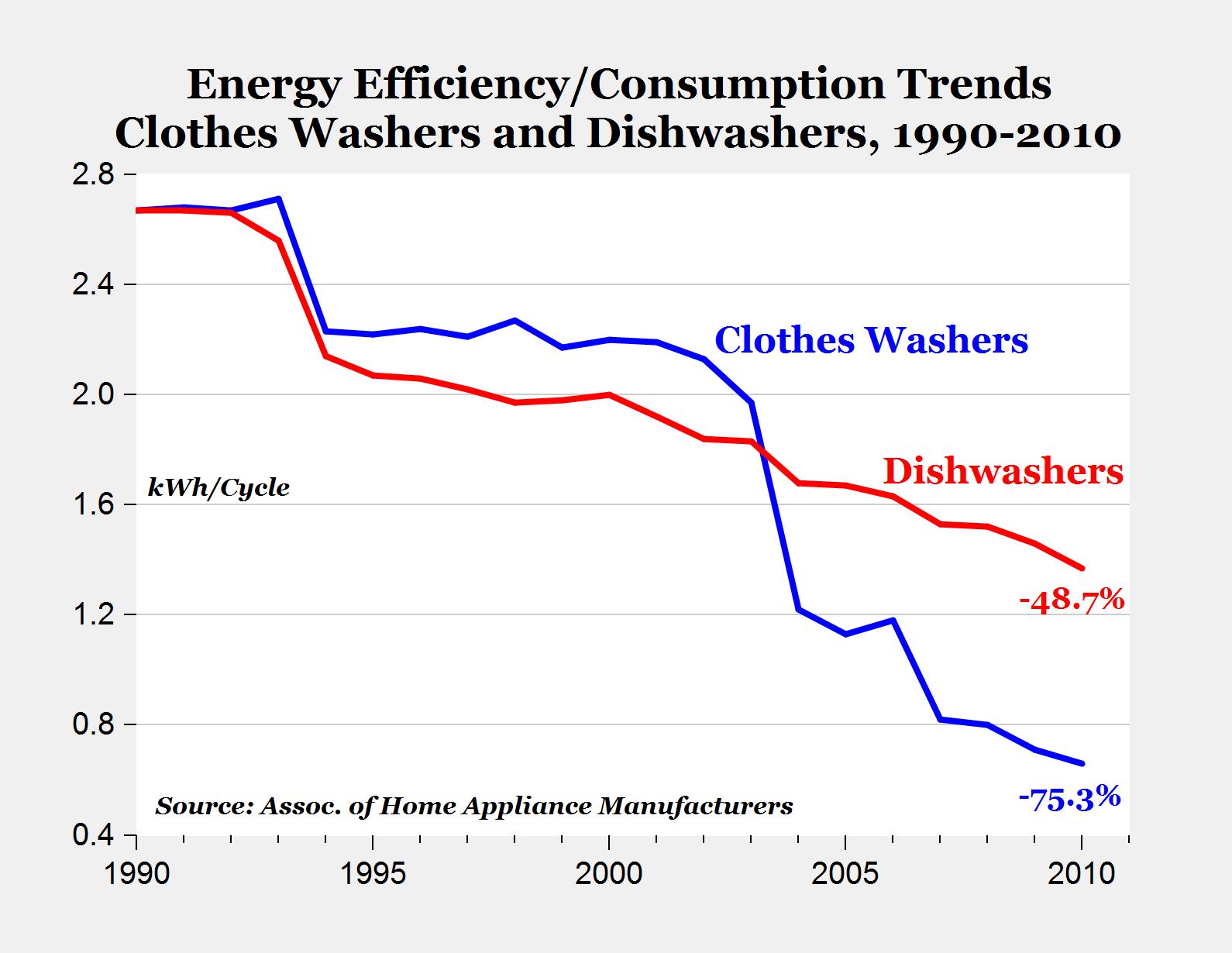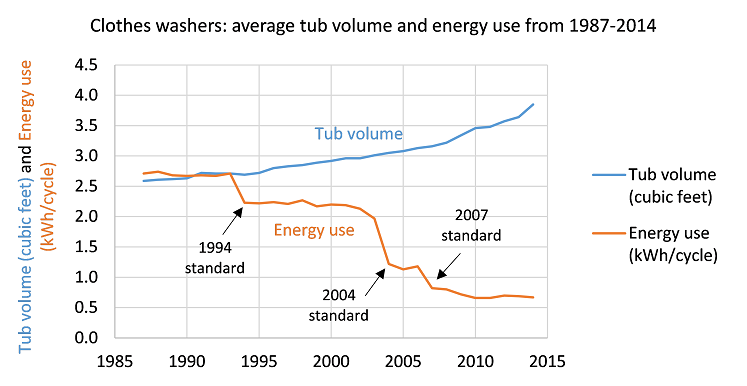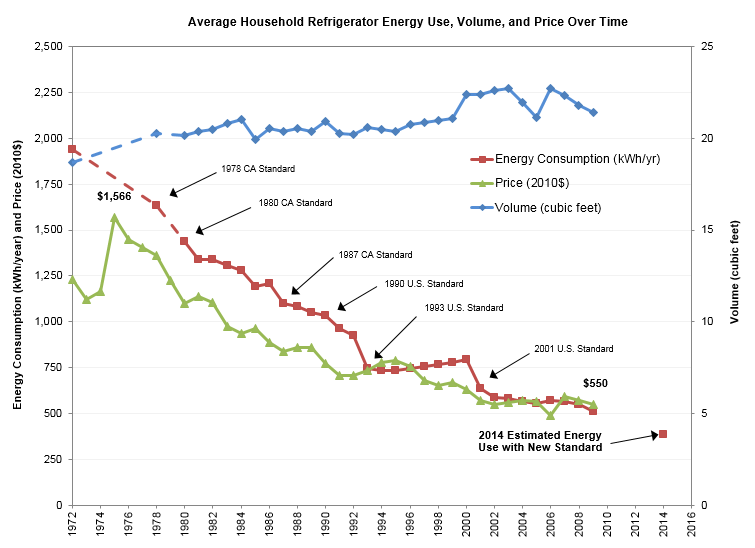Of course they are! They’ve engineered their appliances to get the energy star label. If that label disappears they lose their investment because that label will no longer be there to quickly distinguish the efficient products.
Yup. Trump also removed the requirement limiting the amount of water a toilet can use to flush and no manufacturers cared. They already changed their designs and factories to produce efficient models. Why would they change it all just to make stuff that’s worse?
Yeah, that’s the partni really don’t understand. Trump wants people and companies to spend a lot of extra money to get back the shitty products from the past. Why?
Cause energy efficiency is woke, probably.
If you acknowledge that climate change is real, then clearly you’ve been infected by those dirty leftist commies
Lower water use also means you can get that extra bathroom you wanted.
It does?
Less money on water to use on other shit yeah why not.
Plus who knows what the requirements will be in four years, maybe energy star will be reinstated?
At this point, it’s probably wise not to count on the “in four years” idea that Trump will willingly step aside and allow someone else to be President. And even if we get lucky and he dies before that time, his successor is much younger and just as emboldened as Trump.
To paraphrase the old saying, “Hide yo kids, hide yo couch!”
I’m still planning on leaving the country, but I think it’s okay to have some hope in the meantime
What makes you think you’ll be able to leave?
I hope you have dual citizenship because that’s pretty much your only path at this point.
Why is the response to someone voicing their desire to leave always the same pessimistic dead end response?
I’ve read dozens if not hundreds of responses like yours. I’m leaving this week. Yes it’s hard but it’s not impossible.
Good luck to you!
The inefficient models will be unsellable outside of the US, and the efficient models from elsewhere will be unsellable in the US due to tariffs.
They argued that ending Energy Star labeling would go against Trump’s stated goal of bringing down energy prices.
Haven’t they learned anything? Just because Trump says he wants to do something does not mean he’ll do it. Most especially anything beneficial to anybody but him and his entourage of cock suckers.
Ok. Let’s talk a out this for a moment.
A fridge brand new in 1985 cost about 85 dollars a year in energy now a fridge costs about 45 a year. A YEAR. The savings is absolutely negligible.
And I understand that over a large population that small amount of savings is quite large. The thing is the standards for these types of ratings is… Questionable at best.
For example on a washing machine they conserve water by filling the tub with less water several times which in turn works out to be more water over time instead of just one fill.
The energy star rating sticker is there for marketing and nothing else. It helps sell the appliance. Thats all.
TIL that a ~50% improvement in energy use is ‘absolutely negligible’.
I agree that the energy star system may be flawed but the premise of your comment is wild.
He’s using Maga-nomics. Real numbers don’t mean anything
85 dollars spread over the course of 365 days is .23 cents a day. 45 dollars spread over 365 days is .12 cents a day. Omg. A whole .11 cents of saving in energy costs. Whoopdy doo! But yes if you turn it into a percentage that number seems way way bigger! 50% savings! A whole 40 bucks a year!
It’s funny because energy costs is just one small aspect of refrigeration.
Did you know that fridges made in the 80s and 90s leaked far less freon than ones made in the last 10 years?
The environmental impact of modern refrigeration is staggering compared to that of about 40 years ago.
Freon is a brand name that covers a bunch of refridgerants, but when people talk about freon with negative connotations they are usually referring to the original CFC-based Freon products such as the widely-used refridgerant R-12. Fridges haven’t used CFCs since the early 90s, when they were banned and phased out world-wide due to their ozone-depleting potential.
They were replaced by R-134a (tetrafluoroethane) which is less harmful, and other non-CFC refridgerants but those have since also being phased out for even better options. Modern fridges of the last 10-20 years use butane (R600a) and alternatives which are the current least-harmful options for both health and the environment. Butane is burned as a fuel by the millions of tonnes every year, so an ounce or two leaking from a refrigerator is of truly minimal concern.
In short, if you have bought a fridge since circa 1994 you don’t have to worry about it “leaking freon”, that is a non issue.
The ozone hole is being actively & closely monitored and has been closing since the ban, projected to completely close & return to 1980 levels by 2075. https://simple.m.wikipedia.org/w/index.php?title=Ozone_depletion&wprov=rarw1
Tell that to the thousands of clients I service every year with no r134a left if their sealed systems.
There’s a reason appliance repair techs that work on sealed systems are in such high demand.
Dude. I literally recharge two refrigerators yesterday that were less than ten years old.
I never said they don’t leak, all those systems have leaks with enough time and a certain failure rate right?
If they have increased their failure rate since being offshored largely to China and SEA I would not be surprised, as the manufacturing standards there are infamously lower than USA/EU/etc, but it seems like something where evidence is scant - I can’t find anything in my searches. I’m not saying your experience is not valuable, I believe you when you say you service more of the new ones than the old ones, but there may be other reasons for that than those models having a higher failure rate.
For example, it could be that people are buying fridges more often nowadays (like every 7-8 years instead of every 15+ in the 90s) because so many components on them are made cheaper and fail earlier… Everything is made to me more disposable nowadays (for the worse, IMO). If there are surviving models around from the 90s and earlier then you get survivor’s bias - you don’t see all the ones that failed as they went to scrapyards 25 years ago, etc.
Got a source to back those claims up?
Are those dollar values normalized to the same year?
You going off data or just vibes, because the only thing here that feels questionable at best is your post.
20+ years in the appliance repair industry.
In the 1970s a residential clothing washer would run for about 40 minutes at the max setting pulling 120 volts and 5 amps. Albeit they used more water to clean the cloths faster.
A modern front load washer now runs for about 2 hours for a regular wash at the same 120 volts and 5 amps. Although we are saving water we recycle anyway…
Got it, so just vibes… Well, since you caught me on a Friday with a light schedule…
Amperage rating is maximum load, not how much it uses the entire cycle. I just so happen to have my washer hooked up to a power meter, and look at that! It doesn’t draw the entire load during the entire cycle (which would look like a flat line)!

Runtime is not correlated with energy use. Energy is actually much more closely linked to water usage, since it takes a lot of energy to heat up all that water for a cycle, and all that water weight causes extra load on the internal motors. The additional runtime of modern washing equipment is mostly idle time to allow for additional soaking, etc. and not contributing much energy use. Historical trends show a pretty steady decline in energy use. Here’s one study that found a 75+% decrease in energy use per load from the 90’s to the early 2010’s:

This is interesting, because when partnered with data on tub size, it actually shows that even as loads get larger, energy use has been decreasing over time:

(source is Association of Home Appliance Manufacturers again).
Back to your original comments about refrigerators, I’ll just add, going from ~1400 kWh/yr in 1980 to ~400 kWh/yr in 2014 is a 72% decrease in energy use (which is amazing), even while real appliance costs have come down AND volume has gone up.

IDK where you live, but 1000 kWh/yr for me would cost ~$250 ($0.25/kWh). Swapping a 1980s fridge with a modern one would pay for itself in just 2-3 years. Hell, I could even splurge for a fancy fridge and still have a payback faster than investing in the stock market.
These gains, largely driven by regulatory efficiency targets, all benefit the consumer and the electricity grid at large. Being cranky about the fact that “they don’t make them like they used to” doesn’t change the fact that meaningful improvements have been made over time.
Is that in 1985 dollars or inflation adjusted?
No because appliances have become more efficient since then costing less energy to use.
My point is is that efficiency is negligible.
deleted by creator
My bet is that consumers still care because it equates to dollars, so either the manufacturers will advertise it themselves, raitings websites will measure it as part of their assessment, or some non profit will pop up to do it.
The energy star organization isn’t dictating how much energy manufactures have to make their appliances use federal mandate is.
The law is actually dictating how much energy they should be using and they get more and more stringent every year from Congress.
The energy star rating is nothing more than marketing. The same as the better Business bureau they serve no actual function.
Source?




